EasyPulse Technology
October 23, 2017
At present, the method used to generate pulse signals by most ARB/function generators is to fill the DDS waveform memory with the original pulse data. By editing the pulse waveform data table in advance, DDS can output the correct pulse waveform corresponding with the separate rising and falling edges. This kind of pulse waveform’s edge and width can be finely adjusted, and also contains low jitter. Please see the block diagram below:
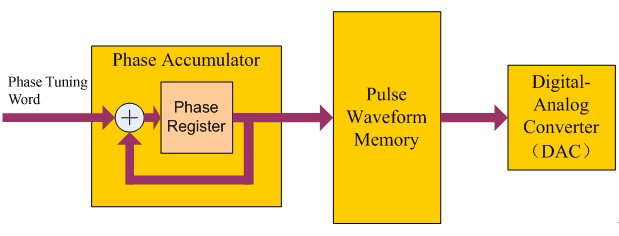
But there are some major disadvantages using this method:
- The rising and falling edge transition time is partially dependent on the set frequency of the waveform. This limits the available rise and fall transitions, especially at low frequencies.
- The output pulse will be limited by the overall waveform length, which is determined by the number of data points used to create the waveform. This also affects the available duty cycle limits.
- Waveform data will need to be updated when changing any details of the pulse’s frequency, edge and width. If the waveform length is large, it needs a long time to change the other parameters of the pulse.
To solve these problems, Siglent created a new algorithm for pulse generation. It is called EasyPulse© technology which is built-in the SDG5000, SDG800, and SDG1000X series waveform generators. EasyPulse© architecture produces low jitter, rapid rising and falling edges, and an increase in available frequencies and duty cycles. The pulse transition time can be adjusted over a larger range with fine resolution.. Here is the block diagram:

Other advantages of EasyPulse© are as follows:
- Rapid rising and falling edges (6ns), even at very low frequencies (less than 1Hz)
- Pulse width can be 12ns under low frequency, with very long or short duty cycles
- Parameter changes such as pulse can be easily and immediately changed without updating any waveform data
- Edge and pulse width can be adjusted over wide ranges.
Technical specifications for a pulsed signal from the SDG5162 waveform generator:
| Period | Maximum 1000000s: Minimum 25 ns |
| Pulse width | ≥ 12ns, 100ps resolution |
| Duty Cycle | 0.0001% ~ 99.9999% |
| Rise/Fall time | 6ns ~ 6s, 100ps resolution |
| Over shoot | < 3% |
| Jitter (Cycle to Cycle ) | <=200ps + 2ppm, DC-1MHz; <= 500ps, over 1 MHz |
Here are several measurements, to verify the outstanding performance of EasyPulse©:
1. As indicated in P1, EasyPulse© can keep rapid rising and falling edges (6ns); but the ordinary DDS pulse edge is very slow (in millisecond).
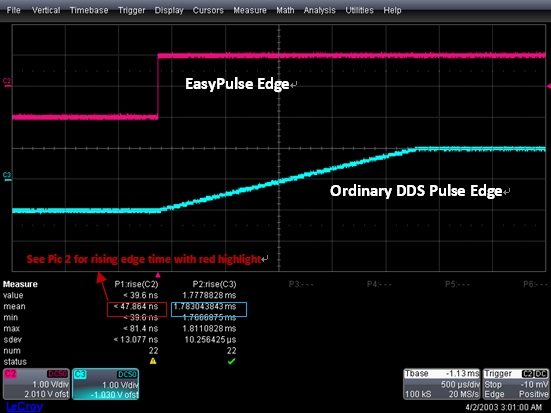
P1 Comparison of Pulse signal edge under 1Hz low frequency
2. For 1Hz pulse waveform, minimum width of an EasyPulse© generator can be 12ns with small duty ratio (less than 0.0001%). But pulse width of ordinary DDS is large and duty cycle cannot be adjusted to small values.
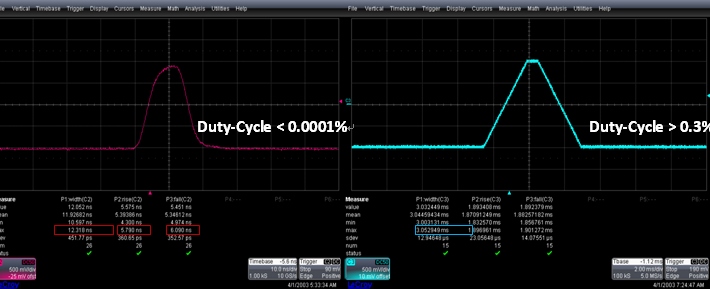
P2 Comparison of pulse duty cycle under 1Hz low frequency
3. When waveform generator outputs 0.1Hz pulse waveform. Edge of EasyPulse© can be adjusted over a large range, minimum edge is 6ns, and maximum edge is 6s. However, there is a limitation on the adjustment of the ordinary DDS pulse edge.
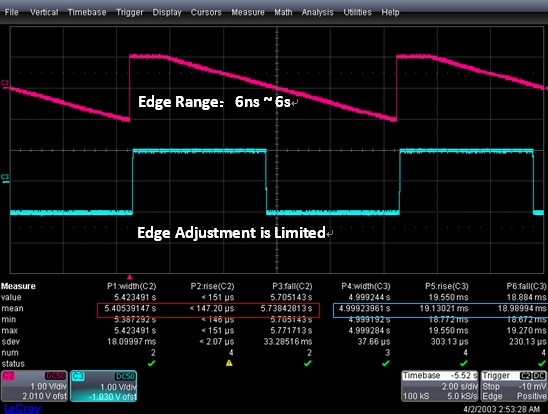
P3 Comparison of edge adjustment of low frequency 0.1Hz pulse signal
4. Using A Siglent oscilloscope to measure the cycle to cycle jitter of EasyPulse©, the RMS value (sdev value) is under 100ps.

P4 EasyPulse waveform with low jitter
As can be seen from these screen shots, the performance and parameters of EasyPulse© is excellent. Many types of pulse signals can be easily produced. It does not matter whether the frequency is high or very low, the, EasyPulse© performance is maintained.
When stating the low jitter performance of EasyPulse©, another disadvantage of DDS on jitter can be listed as the following description:
When DDS generates a pulse, if the reference frequency is not exactly the integral multiple of output frequency (i.e. mod(fref/fout )≠0), it will introduce a deterministic jitter equal to one reference clock period, as shown in the figures below.
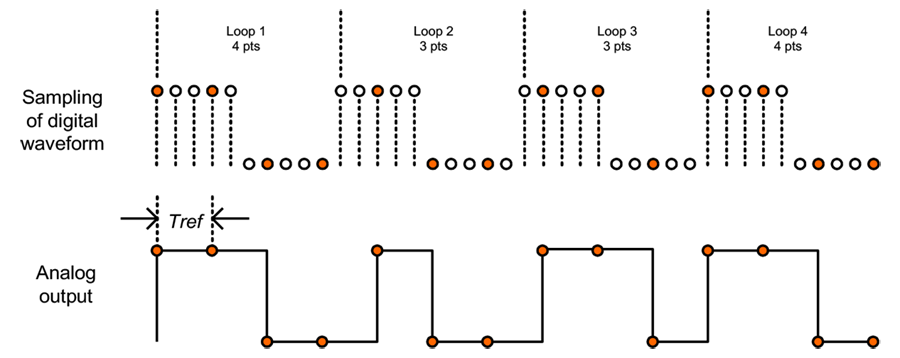
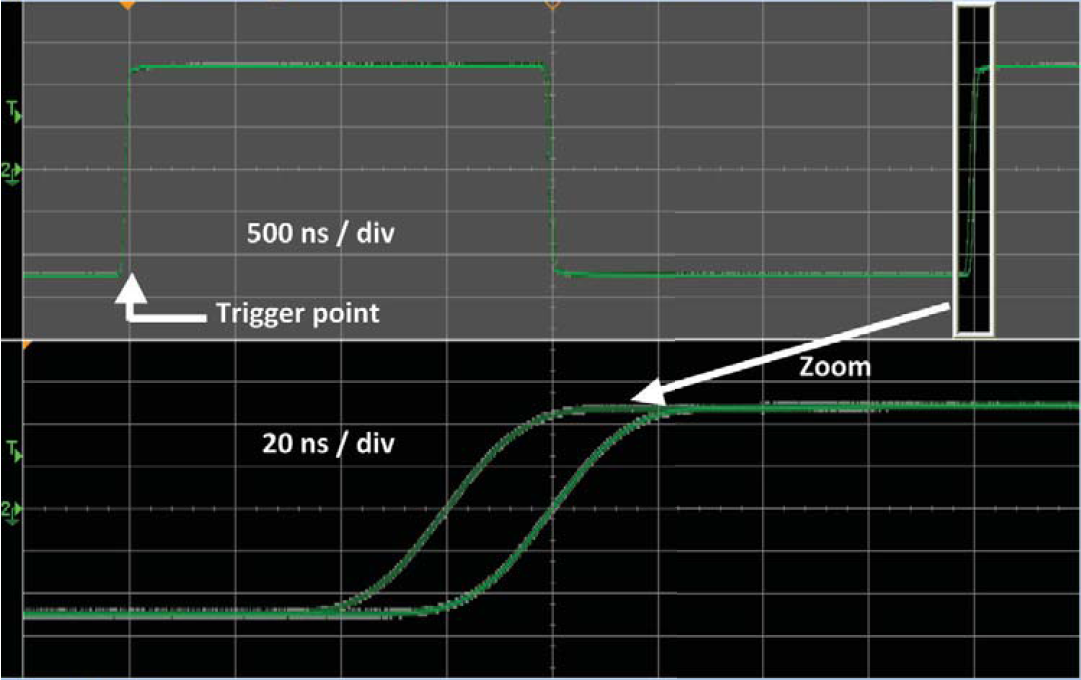
(In the figure the reference clock period is 20ns)
